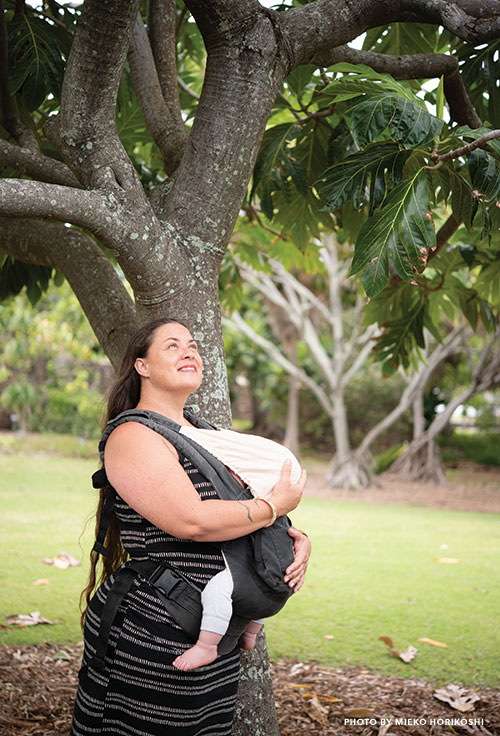
Hawaiian healing methods—past and present—don’t merely meet modern medical standards. In some ways, they surpass them. Kainoa Horcajo, a Hawaiian cultural advisor who studies both lā‘au lapa‘au and lua, Hawaiian martial arts, explains a fundamental difference between Hawaiian and Western medicine: “Traditional practice focuses on bringing one back into equilibrium; it’s a constant process of reflection, adjustment, and reflection,” he says. “Western medicine often attempts to address an acute symptom without a holistic overview of the body. In other words, you can take a pill to fix your upset stomach—but the list of side effects is three pages long. That’s not about returning your body to a state of balance and pono [integrity], but about trying to rectify one particular imbalance without acknowledging the others it may cause.”
When Kaho‘ohanohano supervises a pregnancy, “it’s all-encompassing,” she says. She offers guidance to couples trying to conceive, then supports them through the prenatal process, labor, postpartum, and nursing. “We lomi them. We pray with them. We feed them. We do everything for them! We work through the obstacles or trauma that they might have; that’s ho‘oponopono. If they’ve had trauma around miscarriages or abortions, or if they were sexually or physically abused—this is the perfect time to bring those things up. To be able to give birth in a clear, positive way, you sometimes have some work to do.”
After two decades of practicing lā‘au lapa‘au, Kaho‘ohanohano felt called to share what she’d gathered from her many teachers. She wanted to disseminate the traditional ‘ike (knowledge) before it disappeared. A single Facebook announcement to that effect brought her a dozen students. Similar to a hālau hula (hula school), the class is an intimate cohort that follows the Hawaiian principle of learning by doing: Ma ka hana ka ‘ike. For the past two years, they’ve met weekly to talk story and make medicine. Just as her ancestors did, Kaho‘ohanohano teaches by donation. “If students can pay, great. If not, just show up,” she says. “Commitment is the payment.”
Several of Kaho‘ohanohano’s students have their feet in both worlds—traditional and modern healing. “Western medicine doesn’t recognize the interconnectedness of different disciplines,” says Kyra Glover Ka‘alekahi, a certified occupational therapist and one of those students. “When you start to look only through a lens that diminishes or tries to boil down and capture essences, then you miss so much of the interplay of who we are.”
Who we are—our identity—figures into health outcomes. The Native Hawaiian Health Care Act in 1988 acknowledged that when cultural practices such as lomilomi are incorporated into Hawaiian patients’ healing regimens, they are more likely to seek treatment and thrive. That expectant mother who chewed the hibiscus buds chose Kaho‘ohanohano as her midwife for a reason: she wanted a birth plan that honored her identity as a kanaka wahine, Hawaiian woman. She had used Western-trained midwives for her first two pregnancies, but for her third baby she hoped to find a piece of herself that was missing.
Her delivery at home went smoothly—surrounded by family and uplifted by pule (prayer). Afterward, Kaho‘ohanohano mashed some shiny black fruits into a pulp and applied the juice to the infant’s crown. The baby’s grandmother remarked, “Oh wow. I never seen that used since I was a little girl. My elders used that in our births back then.” The mother was jubilant. Following the ancient practices of her ancestors throughout her pregnancy had restored that missing piece—not only for her, but for her relatives and her child. “That is in essence what we’re doing here,” says Kaho‘ohanohano. “Returning what was stolen long ago, healing across generations.”





